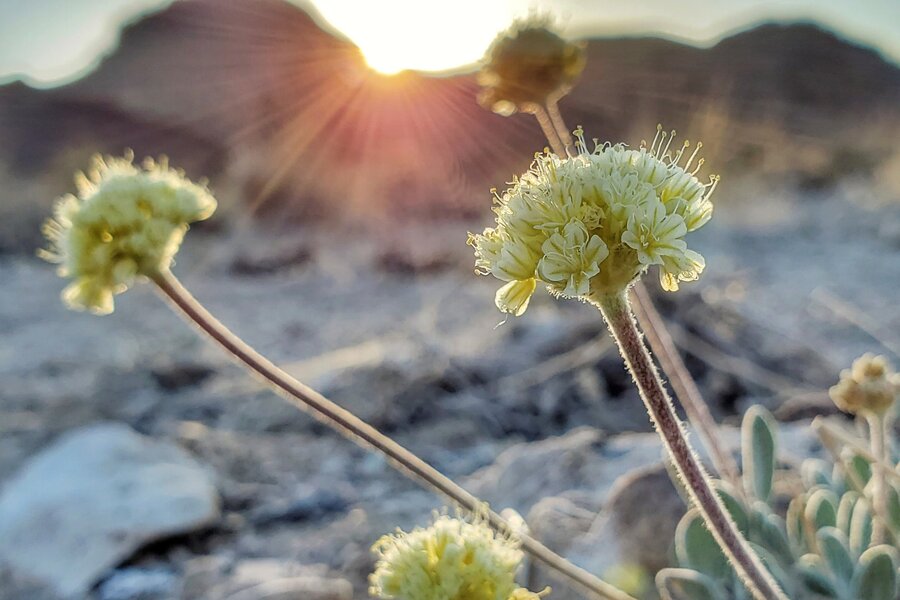Wildflower and lithium mine compete for space in Nevada desert
Loading...
| Reno, Nev.
An extremely rare wildflower that grows only in Nevada’s high desert where an Australian mining company wants to dig for lithium should be protected under the Endangered Species Act, the U.S. Fish and Wildlife Service said Thursday.
The agency outlined its intention to propose listing Tiehm’s buckwheat as a threatened or endangered species as part of its belated, 12-month review of a listing petition conservationists filed in 2019. A federal judge said last month the finding was six months overdue and ordered the agency to render a decision within weeks.
The conclusion announced on Thursday that federal protection is warranted could jeopardize Ioneer Ltd.’s plans to build the mine halfway between Reno and Las Vegas.
It also ups the ante in an early test of the Biden administration’s ability to make good on promises to protect public lands and their native species while at the same time pursuing an ambitious clean energy agenda that includes bolstering production of lithium needed for electric car batteries.
Environmentalists say the delicate, 6-inch tall wildflower with yellow blooms is on the brink of extinction with fewer than 30,000 individual plants remaining.
Ioneer acknowledges Tiehm’s buckwheat hasn’t been documented anywhere else in the world but insists it can co-exist with the mine.
Nevertheless, the looming listing presents the biggest regulatory hurdle to date for what would be only the second large-scale lithium mine operating in the United States.
Under the court order, the service now has until Sept. 30 to submit a formal rule proposing protection of the plant as a threatened or endangered species. A 60-day public comment period will follow.
The Center for Biological Diversity first petitioned for federal listing in October 2019 and weeks later filed suit against the U.S. Bureau of Land Management to block construction of the mine at Rhyolite Ridge west of Tonopah in the Silver Peak Range about 20 miles east of the California line and 200 miles southeast of Reno – where Tesla Motors’ largest lithium battery factory is located.
“Tiehm’s buckwheat shouldn’t be wiped off the face of the earth by an open-pit mine,” Patrick Donnelly, the center’s Nevada director, said Thursday. “The service stepping in to save the plant from extinction is the right call.”
Ioneer Managing Director Bernard Rowe said Thursday they expected the warranted finding and share the Fish and Wildlife Service’s “commitment to protect and preserve Tiehm’s buckwheat in its habitat.”
“This process will provide greater certainty around our schedule and diminishes the prospect of future litigation,” he said. “We remain confident that the science strongly supports the coexistence of our vital lithium operation and Tiehm’s buckwheat.”
The tiny population of Tiehm’s buckwheat is found on 21 acres spread across 3 square miles at the mine site.
Scientists say the plant plays an integral role in the desert ecosystem by stabilizing soils, dispersing seeds, and creating a sort of oasis that provides rare food and moisture for bees and other pollinators.
The service said a 2019 survey estimated the plant’s global population totaled 43,921 – all at the mine site. But it said in Thursday’s finding that an unprecedented rodent attack during severe drought last summer damaged or destroyed more than half the plants.
It said that herbivory combined with the potential impact from the mining project would reduce the flower’s population by an estimated 70% to 88% – “or from 43,921 individuals to roughly 5,289-8,696 individuals.”
Ioneer is proposing to salvage most of the remaining plants by transplanting them to another location, the service said.
“However, we are uncertain whether the salvage operation will succeed because current research indicates that Tiehm’s buckwheat is a soil specialist, that adjacent unoccupied sites are not suitable for all early life-history stages, and there has been no testing and multiyear monitoring on the feasibility of successfully transplanting the species,” the agency said.
Other threats to the plant include road-building, off-road travel, livestock grazing, and climate change, the service said.
Ioneer says the mine would create 400 to 500 construction jobs and 300 to 400 operational jobs, and is expected to produce 22,000 tons of lithium – enough to power hundreds of thousands of electric vehicles annually.
Demand for lithium worldwide is expected to double by 2025. Much of the world’s lithium supply currently comes from Australia and South America, where Chinese firms are heavily invested.
Boosting domestic production could potentially lower the price tag on a key component of President Joe Biden’s $2 trillion climate plan: offering rebates to consumers to trade in gas-powered for electric cars.
The only large-scale lithium mine currently operating in the U.S. is also in Nevada, only about 10 miles from where Ioneer proposes its mine. The North Carolina-based Albemarle’s Silver Peak Mine has been in operation since the 1960s.
A third lithium mine proposed in north-central Nevada near the Oregon line at the largest known lithium deposit in the U.S. also is facing legal challenges.
This story was reported by The Associated Press.







